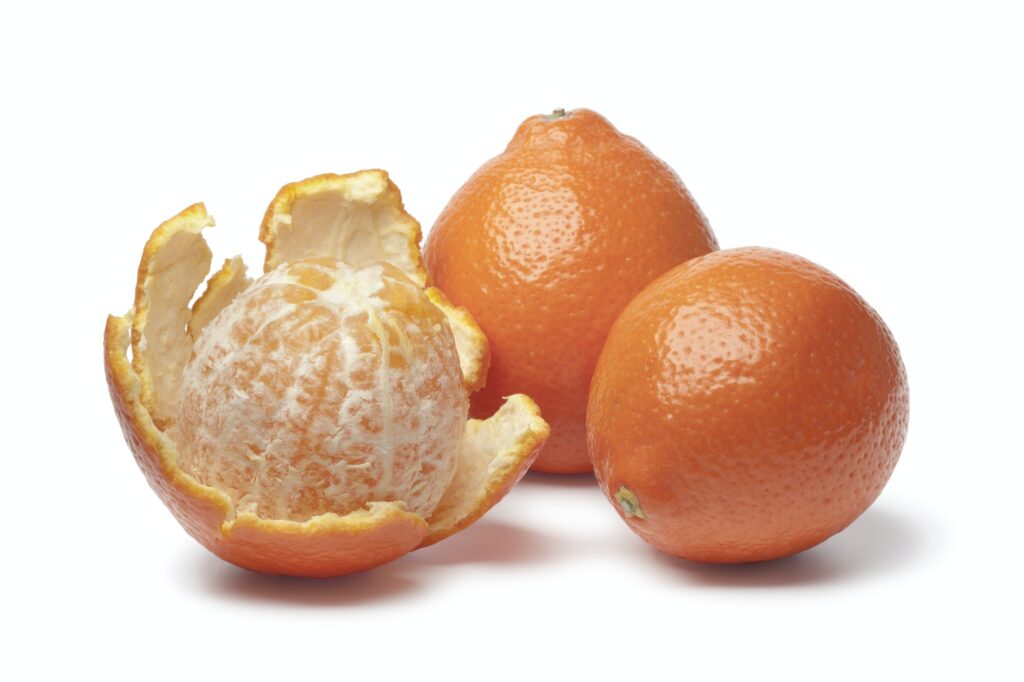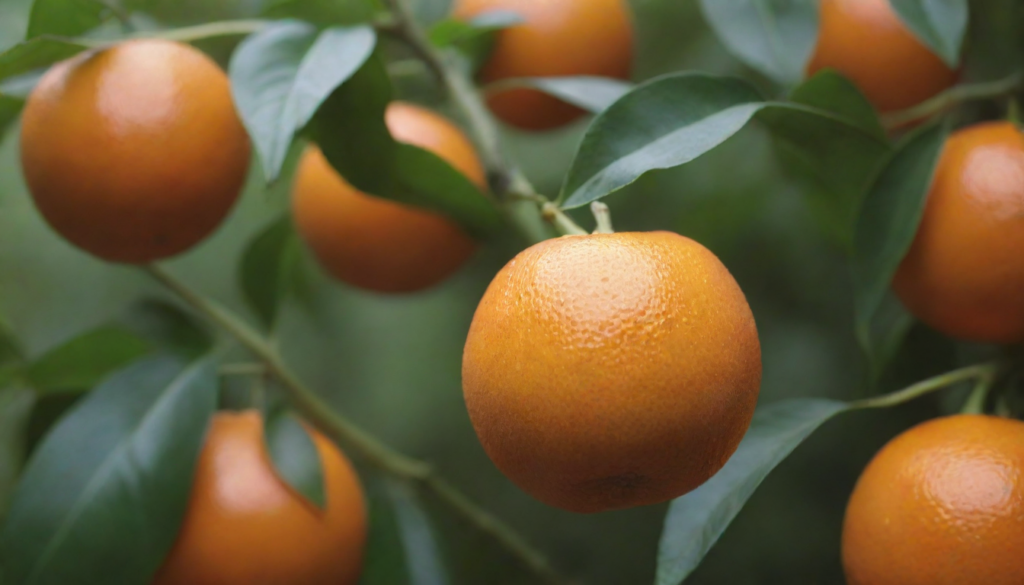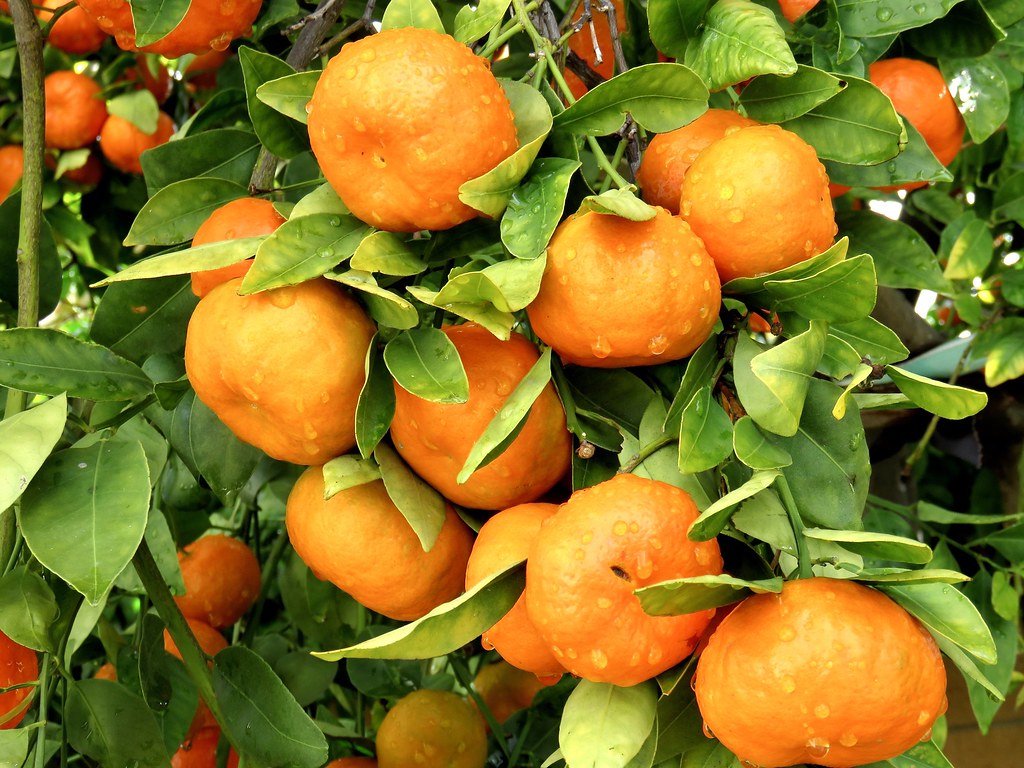18 Interesting Facts About Tangelo

Introduction to Tangelos
Tangelos are a delightful citrus fruit that combines the sweet juiciness of tangerines with the tangy zest of grapefruits. This hybrid fruit has a fascinating history and a unique flavor profile that sets it apart from other citrus varieties.
Tangelos are rare hybrid fruits that come from crossing a tangerine with either a pomelo or a grapefruit. They acquired their distinctive name by combining “tangerine” and “pomelo.”
Tangelos resemble small oranges or grapefruits in size and shape. But their loose, wrinkly skin—in hues ranging from bright yellow-orange to vivid reddish-orange—instantly gives away their identity.
After peeling back the bumpy rind, you’ll uncover light orange segments that serve up juicy flesh and soft seeds inside. The flavor offers a delightful balance between tangerines’ addictive sweetness and grapefruits’ signature tangy zing.
Here are 18 captivating facts that reveal why these sunny fruits deserve a place in your shopping cart:
1. Tangelos Originated in Jamaica

The very first tangelo tree sprouted naturally from a Ruby Red grapefruit tree pollinated by a Darcy tangerine tree in Jamaica in the 1900s1.
Horticulturists took a special interest in this spontaneous crossbreed. They then set out to cultivate the prized tree and its unique fruit, initially dubbing it the “ugli fruit” for its crinkly exterior hiding the tasty interior treat.
2. Tangelos Are Considered Ancient Fruits
Although tangelos themselves are relatively new arrivals on the citrus scene, their parent fruits carry ancient histories spanning back over 4,000 years.
Tangerines originated in Southeast China well over 3,500 years ago. Pomelos emerged more than 4,000 years ago in Southeast Asia.
So while tangelos only recently charmed citrus connoisseurs in the 20th century, their lineage gives them an impressively early origin story in the world of fruit.
3. Florida Leads Tangelo Production
Warm, humid Florida offers near-perfect growing conditions for tangelos to thrive. So the Sunshine State now stands as the leading producer of commercial tangelo crops in the United States.
California, Texas, and Arizona contribute smaller but still significant tangelo harvests each year in America. Outside the U.S., Mexico grows abundant tangelo supplies to export globally.
4. Popular Varieties Include Honeybell, Orlando & Minneola
While all tangelos share a tangerine crossed with grapefruit/pomelo lineage and general characteristics, over a dozen different cultivated varieties exist 2.
The three most common tangelo types include:
- Honeybell: Round shape; thin, bright reddish skin; sweet, tender flesh.
- Orlando: Medium-large size; reddish-orange rind; juicy, mildly acidic flavor.
- Minneola: Egg-like shape; yellow-orange; rich, sweet taste.

Tangelos come in several varieties like Honeybell, Orlando and Minneola (Photo credit: Getty Images)
5. An Excellent Source of Immunity-Boosting Vitamin C
A single medium tangelo provides over 88 milligrams of vitamin C—satisfying your entire recommended daily intake for this essential nutrient.
Vitamin C serves as a vital antioxidant to counter cell damage from free radicals caused by stress, UV exposure, and other external aggressors. It also stimulates white blood cells to support proper immune function against infections like flu and the common cold.
Since the human body doesn’t produce vitamin C on its own, citrus fruits like tangelos offer an easy, delicious supply to meet your daily requirements.
6. Tangelos Have a Low Glycemic Index Suitable for Diabetics

The glycemic index (GI) measures how quickly a particular food boosts blood sugar levels. Low GI foods slowly release glucose without sharp insulin spikes, while high GI foods rapidly elevate blood sugar.
Tangelos have a moderately low glycemic index of 423. For comparison, grapefruits score 23 while dates are up at 103.
The tangelo’s lower GI makes it an ideal snack for diabetics and anyone striving for even energy levels while preventing weight gain. Unlike sugary treats, tangelos provide lasting sustenance without the dreaded sugar crash or fat storage downsides.
7. Early Research Suggests Tangelos May Lower “Bad” LDL Cholesterol
Emerging research on grapefruit pectin reveals this soluble fiber found abundantly in citrus fruits, including tangelos, holds promise for improving heart health markers like unhealthy LDL cholesterol levels.
One promising small study in 2018 supplemented participants with 4 grams per day of purified citrus pectin. After only 4 weeks, subjects’ LDL cholesterol levels significantly decreased compared to the placebo group.
While more extensive clinical trials still need to replicate these cardio-protective results from isolated pectin, tangelos as whole fruits likely convey similar benefits from their natural fiber content.
8. Both the Rind and Juice Add Flavor to Foods and Drinks
Far from disposable household waste, tangelo peels find many applications for adding vibrant citrus flair. Both tangelo zest and candied peels can elevate numerous desserts, baked goods, and meat dishes.
The juicy interior pulp also stands out as an intriguing ingredient. Use fresh-squeezed tangelo juice to craft tangy-sweet salad dressings, marinades, or beverages.
Pro tip: For best results extracting maximum juice, bring tangelos to room temperature before squeezing to prevent a diminished yield.
9. Tangelos Shine in Both Sweet and Savory Recipes
Beyond tantalizing fruit salads, tangelos also upgrade more unexpected recipes spanning from seafood to barbeque sauce. Tart citrus taste mingles impeccably with salty and spicy elements.
For appetizing recipe ideas, incorporate tangelo segments into:
- Salsas and homemade guacamole
- Warm winter salads with nuts and citrus vinaigrette
- Glazed carrots or roasted Brussels sprouts
- Fruit tarts, cakes, and citrusy ice cream
- Herb-crusted fish or citrus barbeque shrimp skewers
Mix up a custom tangelo margarita or non-alcoholic tangelo spritzer as more tangelo-forward thirst-quenchers.
10. Tangelos Peel Easily By Hand
While sister citrus fruits like oranges or grapefruits often require special cutting tools to wrestle off their skin, tangelos obligingly peel by hand without a fuss.
You can simply start at the stem end and pull downwards as the rind easily detaches to reveal the juicy citrus prizes inside. No knife work or messy nail-digging needed!
This user-friendly, no-mess quality makes tangelos an excellent choice for tossing into your work bag or packing in school lunches. Their grab-and-go portability provides a refreshing burst of flavor anywhere.
11. Tangelos Were First Nicknamed “Ugli Fruit”

When tangelos made their commercial debut arriving on international export ships from Jamaica, marketers deemed them too homely looking to attract customers on aesthetics alone.
Unconvinced that tangelos’ loose, wrinkly rind housing the sweet interior fruit would charm buyers, early branding dubbed them “ugli fruit”—an irreverent nod to their unsightly exterior belying the tasty citrus inside.
Luckily over time, tangelos earned admiring fans who saw beyond the surface and recognized them for their irresistible flavor rather than critiquing peel beauty standards. The affectionate “ugli fruit” moniker gradually morphed into the more elegant “tangelo.”
12. Certain Varieties Are Nearly Seedless
Many tangelos share their distant pomelo grapefruit ancestry by featuring edible yet somewhat pesky seeds embedded in their segmented fruit flesh. But several tangelo types offer a pleasantly seedless surprise with easier eating.
The most popular seedless variety, the Minneola tangelo, delights fans with its few-to-no-seed character along with its signature neck narrowing to a stem end that gives this variety an instantly recognizable bell-like shape.
Seedless tangelos like the Minneola give you more juicy fruit rewards per bite without having to discretely spit unwanted pit pieces into your napkin.
13. Tangelos Are Smaller Than Grapefruits
While variable in exact size depending on specific cultivar, most tangelos measure approximately 3 inches in diameter—about the scale of a typical orange or small grapefruit. On average, commercially grown tangelos weigh between 5 to 9 ounces.
For comparison, the average grapefruit clocks in quite a bit larger, averaging 4 to 5 inches wide and weighing 10 to 14 ounces.
So tangelos’ petite size makes them perfect single-serve fruits for one satisfying snack rather than needing to divide up a massively substantial grapefruit.
14. Tangelos Are in Season During Cooler Winter Months
If you live in the Northern Hemisphere, tangelos make their grand appearance in autumn and peak from November through March. So they rank among excellent cool weather citrus fruits to provide bright sunshine flavor amid winter.
During their growing season stretching into early spring, chilled overnight temperatures contrast beautifully with hot sunny days in the 70-80°F range. This wide delta from night to day serves up ideal conditions for plumping tangelos full of sweet, tangy juice.
15. Tangelos Require Heat and Humidity to Grow
Tangelos thrive best in subtropical climates that mimic conditions in their native Jamaican homeland. These heat-loving fruits prefer daytime highs averaging 85-95°F coupled with balmy, humid nights around 70°F.
Ideally, tangelo orchards enjoy evenly distributed annual rainfall (or irrigation equivalent) ranging from 40-60 inches to quench their thirst and prevent desiccation stress.
These preferences for hot, humid environments explain why commercial growing remains concentrated in Florida, California, and the Gulf States like Texas where the climate aligns most closely with tropical ideals.
16. Select Heavy, Firm Tangelos for Best Quality
When tangelo hunting at the grocery store or farmers’ market, use these insider tips for picking top-quality specimens:
Avoid any bruised or overly puffy fruits lacking that signature tangelo tautness.
17. Store Tangelos at Room Temperature for Up to 3 Days
Once home with your tantalizing tangelo haul, proper storage preserves maximum freshness:
- Keep tangelos at room temperature for up to 2-3 days
- In the refrigerator drawer, tangelos last 2-4 weeks
The cold dulls flavor, so only refrigerate longer-term. Eat refrigerated ones within a few days after returning to room temp.
18. Tangelos Offer Many Health Benefits
Beyond captivating your taste buds with sensory delight, tangelos also nourish your body with valuable nutrition like:
- Immunity-enhancing vitamin C and vitamin A to thwart infection
- Potassium to control healthy blood pressure
- Folate to support new cell generation and heart health
- Powerful antioxidants like carotenoids for anti-aging
- Cholesterol-lowering pectin fiber for heart protection
- Low-calorie, low-sugar fuel (only ~60 calories per fruit) to energize without weight gain
So alongside their pleasing flavor and texture, tangelos boost wellness through various phytonutrients that supercharge bodily functions.

Key Takeaways on Tangelo Facts
- Tangelos are a tangerine-pomelo/grapefruit hybrid first cultivated in Jamaica
- Sweet-tart and juicy, they offer a unique citrus flavor
- Florida leads global cultivation, with crops peaking November-March
- Tangelos supply high vitamin C plus other nutrients and fiber
- They work well in both sweet recipes (fruit salads) and savory dishes (salsas, fish)
- Unlike some thicker-skinned citrus, tangelos peel easily by hand
Frequently Asked Questions About Tangelos
- https://en.wikipedia.org/wiki/Jamaican_tangelo [↩]
- https://en.wikipedia.org/wiki/Tangelo [↩]
- Tangelo: Nutritional Information and Health Benefits, https://www.healthifyme.com/blog/tangelo/ [↩]





